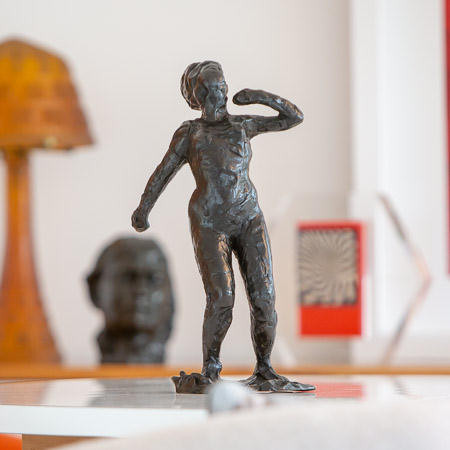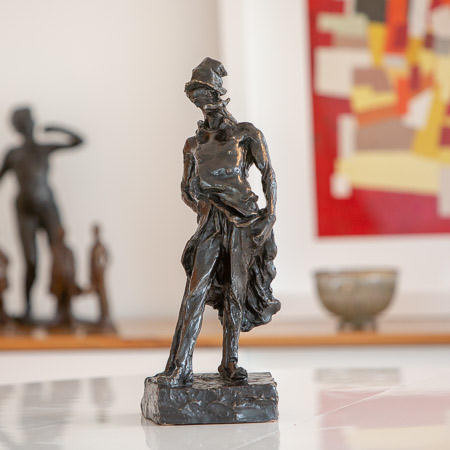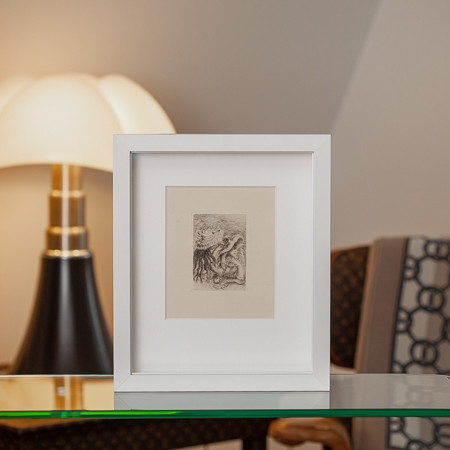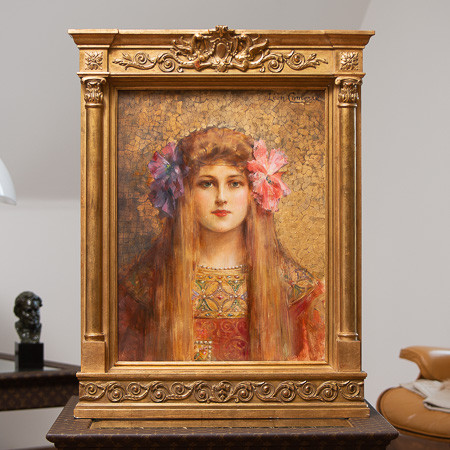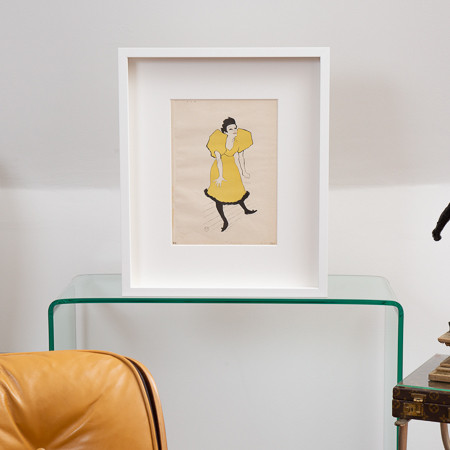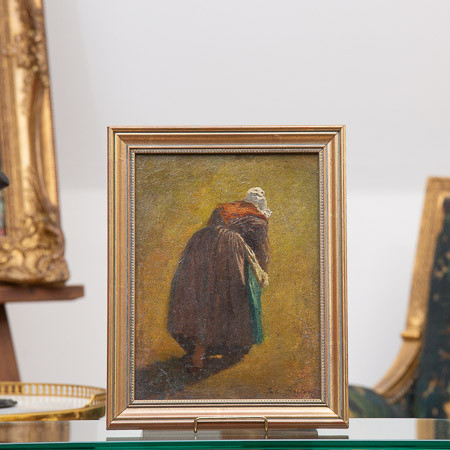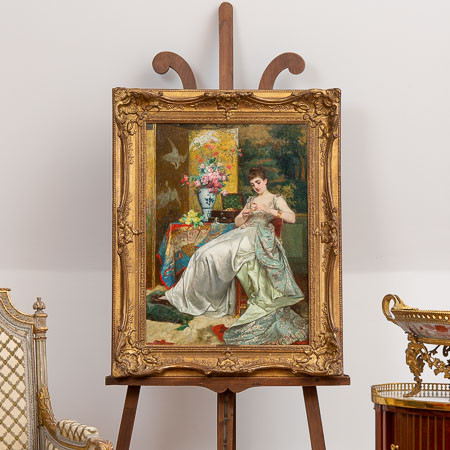About
The rest of the walker, oil on mahogany panel, with “to his friend Tauveron” signed “Norbert Gœneutt”at the top right and dated 1884.
While impressionist works gained acceptance by the general public and ended up being sold to collectors at the end of the 19th century, Norbert Gœneutte, French painter and engraver, (Paris 1854 – Auvers - sur-Oise 1894) was akin to the movement of the impressionists by practising a rather similar technique. He met the painters Auguste Renoir, Camille Pissaro, Claude Monet, and Edouard Manet in Paris who would become his close friend. Like them, his favourite subjects were mainly landscapes and scenes from Parisian life, subjects dear to the Impressionists. However, he quickly detached himself from their influence to follow his own more personal path.
The Walker's Rest, painted by Norbert Gœneutte in 1884, incorporates most of the codes of Impressionist art. The composition is reduced to a few superimposed planes, the lines, density and volumes evaporate with movement and light. The visible, rapid and vigorous touch is also characteristic of the painting of the Impressionists. The representation of light is remarkable there. However, unlike the Impressionists, he does not rule out the black colour which he uses widely in this work. His palette is reduced to shades of browns and greens, enhanced by the orange colour of the bundle, without however really using the complementary colours used by the impressionists. This painting, with its sober decor, draws the viewer's full attention to the character placed in the centre of the composition. Only the face of the hiker is treated with more details, which underlines the talent of the portrait painter. Even though the eyes are not visible because of the hat, the character's physiognomy appears clearly showing an exhausted face. Only sketched out, the legs of the wooden chairs disappear into the ground.
The subject of this painting is very different from elegant scenes or family portraits made by the painter. In the 1880s, many were the popular genre scenes represented by Goeuneutte like the painting The Walker's Rest, such as Morning soup exhibited at the Musée d'Orsay or Les Haleurs du Havre; la Pay, an engraving kept at the MuMa , André Malraux museum of modern art in Le Havre. This period corresponded to the birth of Post-Impressionism (also called Neo-Impressionism) when the Impressionist movement seemed to be reaching its limits. New movements would emerge such as pointillism with Seurat, synthetism with in particular Paul Gauguin, Emile Bernard and Louis Anquetin, symbolism with Paul Gauguin, or even Nabis with Paul Sérusier. The artists broke with the impressionist theme but worked by drawing on the experiences and advances of the impressionist painters. Evolving towards an approach of their own, they practised their art with a style and a renewed technique in great freedom. Norbert Gœneutte did not give in to the new artistic and innovative practices of those painters and continued his very personal work until he was killed by tuberculosis at the age of 40. However, his work remains largely influenced by Impressionism just like for his contemporaries.
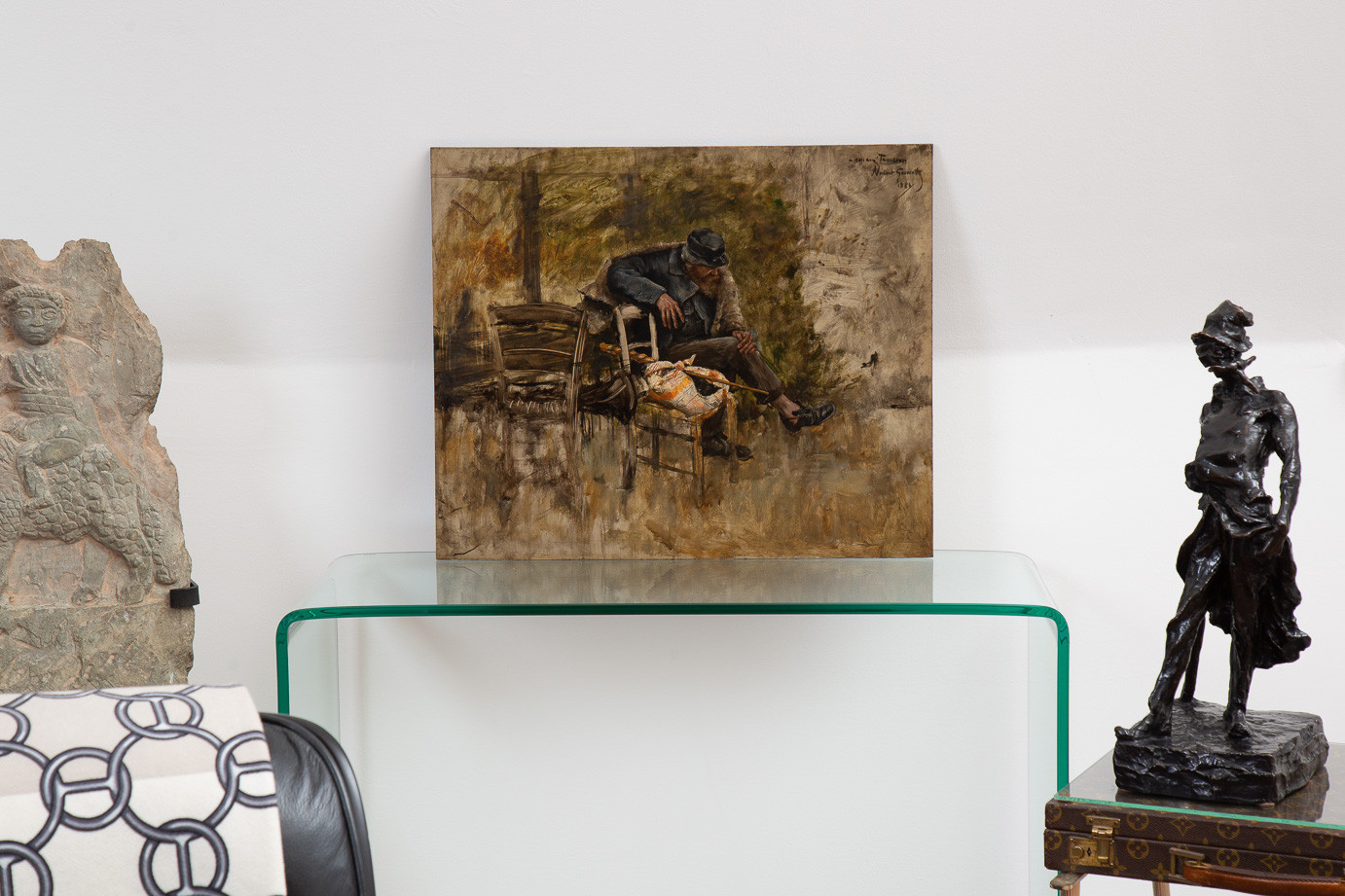
Characteristics
- Year: 1884
- Origin: France
- Artist: Norbert Goeneutte
- Material or technique: Oil on wood
- Sizes: 55 x 45.5 cm (Width x Height)


